Over 20 years manufacturing experience of Road marking machine and road marking removal machine.
sales@lxdmarking.com+86 15805293662
Comparing Manual and Automated Road Line Marking Machines
Imagine a recent incident on a busy highway where poor road line markings led to a multi-car accident due to unclear lane boundaries. This unfortunate event underscores the critical role road line marking plays in ensuring safety. In today's world, this traditional practice has evolved significantly, with automated systems replacing many manual methods. Understanding the differences between these two approaches is essential for anyone involved in road maintenance or transportation planning.
What is a Road Line Marking Machine?
A road line marking machine is an advanced tool that applies paint or markings to roads with precision and speed. There are two main types: manual and automated. Manual marking involves a team of workers using paint cans, brushes, and rollercoats to apply markings. Automated systems, on the other hand, use a combination of sensors, cameras, and robotic arms to achieve highly accurate and consistent markings.

Manual Road Line Marking Techniques: A Practical Comparison
Manual road line marking is a labor-intensive process that requires significant human effort. Typically, a team of workers uses paint cans, brushes, and rollercoats to apply markings to roads. This method is reliable but comes with several limitations: - Time-Consuming: Manual marking is slower compared to automated systems, making it less efficient for large-scale projects. - Human Error: Paint can smudge, degrade, or shift during the application process, leading to inconsistent results. - Weather Sensitivity: Manual marking is challenging in adverse weather conditions like rain or snow, where paint can become slippery or difficult to apply. Despite these challenges, manual marking remains a valuable skill for safety officers, construction managers, and others who need to verify the accuracy of markings applied by automated systems. It also provides a practical learning experience for newcomers to the industry.
Automated Road Line Marking Machines: Advancements and Capabilities
Automated road line marking machines represent a significant leap forward in road maintenance technology. These systems use advanced sensors, cameras, and robotic arms to apply markings with remarkable precision. Here’s how they compare to manual systems: - Speed: Automated machines can mark multiple lanes per hour, significantly reducing project timelines. - Precision: Automated systems are highly accurate, with markings typically measuring within 0.1 inches of the intended design. - Efficiency: They reduce labor costs and minimize waste, making the process more cost-effective in the long run. - Weather Resilience: Automated systems can work in all weather conditions, ensuring consistent results.
Comparative Analysis: Performance Metrics
Comparing manual and automated systems using key performance indicators provides a clearer picture of their relative strengths: - Accuracy: Automated systems offer precision within 0.1 inches, while manual methods can be inconsistent. - Speed: Automated systems can mark multiple lanes per hour, whereas manual workers may take several minutes per lane. - Efficiency: Automated systems save significant labor and time, making them more cost-effective. - Environmental Impact: Automated systems use less paint and are less disruptive to the environment, making them more sustainable.
Real-World Applications and Impact
Let’s look at some real-world examples to illustrate the benefits of automated road line marking: 1. Project A: A major city implemented an automated marking system for its urban renewal project. The system reduced project timelines by 40% and saved hundreds of labor hours. The results were impressive, with markings appearing nearly flawless. 2. Project B: A remote highway in challenging terrain was marked using an automated system. Despite frequent weather disruptions, the system maintained consistent markings throughout the project. These case studies demonstrate the versatility and reliability of automated systems, especially in demanding conditions.
Future Trends and Innovations
As technology continues to advance, road line marking systems are evolving. Future trends may include: - AI-Driven Systems: These systems can adapt to changing road conditions in real time. - 3D Printing: Specialized markings can be printed with greater precision. - Hybrid Systems: Combining automated systems with real-time data for enhanced accuracy.
Making an Informed Decision
comparing manual and automated road line marking machines reveals clear advantages for each method. Manual marking is a valuable skill for verifying the accuracy of automated systems, while automated systems offer significant benefits in terms of precision, speed, efficiency, and environmental sustainability. When deciding whether to invest in automated systems, consider the scale of the project, available labor, and the desired level of precision. For large-scale projects, automated systems are the clear choice. For smaller operations or specialized tasks, manual marking may still be the most practical option. By understanding the strengths and weaknesses of both methods, you can make an informed decision that aligns with your project goals and resources. Whether you choose manual or automated marking, prioritizing safety, efficiency, and sustainability in road maintenance is crucial. As road infrastructure continues to grow, the shift to automated systems is essential for maintaining safety and efficiency. Embracing this technology will ensure that our roadways remain safe and reliable for years to come.

